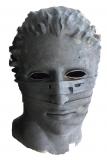Results 1 to 10 of 23
Thread: How to design moving parts
-
02-03-2016, 10:50 AM #1Student

- Join Date
- Feb 2016
- Posts
- 1
How to design moving parts
Hey guys i am very new here and have had a 3d printer for about 6 months. I have designed some of my own simple projects with out issue and glued them together after printing. What i am fascinated with is how people are designing things that print all as one piece but have moving parts. I have tried looking for some good resources on this subject but have been unsuccessful. Does anyone have a good source that they can share or and sort of guidelines that would help out?
The first thing that i have been tinkering with is a simple box with a gear in it that will turn. i have left a gap between the top and the bottom but it always seems to fuse the gear to the base and the top. Thanks for the help I have attached my STL gear_box_5_fixed.stl
-
02-10-2016, 10:31 PM #2
Very carefully.
Check out a lot of the moving items on thingiverse, and see how they are designed and printed.
You may have to use supports and a needle file set to get them out to keep parts free.
-
02-11-2016, 02:21 AM #3
look at how intentional3D made their jack. it's a real beauty
-
02-11-2016, 11:05 PM #4
Personally I would prefer to print single properly toleranced items and assemble them as opposed to fudging tolerances so that something can turn.
Not answering the question but worth mentioning in this kind of thread.
-
02-28-2016, 12:46 PM #5Student

- Join Date
- Aug 2015
- Posts
- 21
i would imagine that this method would also have the benefit of leading to much more accurate prints. In some circumstances it should lead to better characteristics like tensile strength as well as you an much more easily optimize which axes to print each part on. As an example, filament on the XY axes are usually much stronger the on the z axis.
-
06-15-2016, 02:39 AM #6Engineer-in-Training

- Join Date
- May 2016
- Location
- SE Wisconsin
- Posts
- 206
This... is a really good post.
Nice work.
I would only clarify number 3, in the case of FDM there is no powder but the same still applies, support structure material must be able to work it's way out of the joint or it will bind up in operation.
Number 5 is especially nice. Not something most people consider, spring preload is the difference between a sagging part and a nice high quality function that feels solid.
-
06-15-2016, 07:05 AM #7
it is fun trying to get parts within parts. Particularly if like me you don't like using supports.
This is my best part within a part design to date:
Well it would be but uploading pictures is definitely not working.
I'll be back ...



basically I wanted a spool to wind 10-20 metre sample lengths of stiff filaments on. Figured was quicker to print one that expanded and locked than just make one big spool.
Works really well :-)
I can print the parts seperately as well, but they print together and just pull to lock with no problem.
I think the smallest gap I've used is 0.5 mm.
This is the mark 2 - mark one has holes in the shaft and locked with a bent paperclip :-)
Print these at 0.3mm layer height and around 65mm/s speed - which is quick for my creator :-)
-
06-15-2016, 03:09 PM #8Staff Engineer

- Join Date
- Jan 2014
- Location
- Oakland, CA
- Posts
- 935
It looks like you've reinvented the wheel...
-
06-15-2016, 05:34 PM #9Engineer-in-Training

- Join Date
- May 2016
- Location
- SE Wisconsin
- Posts
- 206
That's a freakin genius design.
Must remember, steal, and patent.
-Edison
-
06-16-2016, 11:02 AM #10
It is nice.
But not a pretty artistic model, so no money in it :-(
lol
In fact that one in the pic the left arm didn't print that well - but still locked in place without any problems.
Beauty is it gives you a good width to wind stiff filaments round.
Once wound you leave it for a few days to get used to the bend and viola.
The clever bit is getting the top rim to print without supports.
You got to love openscad :-)




 Reply With Quote
Reply With Quote








Extruder not feeding during print,...
Yesterday, 01:59 AM in Tips, Tricks and Tech Help